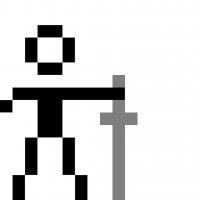Hey, I am semi-new to 3d-programming and I've hit a snag. I have one object, let's call it Object A. This object has a long int array of 3d xyz-positions stored in it's vbo as an instanced attribute. I am using these numbers to instance object A a couple of thousand times. So far so good.
Now I've hit a point where I want to remove one of these instances of object A while the game is running, but I'm not quite sure how to go about it. At first my thought was to update the instanced attribute of Object A and change the positions to some dummy number that I could catch in the vertex shader and then decide there whether to draw the instance of Object A or not, but I think that would be expensive to do while the game is running, considering that it might have to be done several times every frame in some cases.
I'm not sure how to proceed, anyone have any tips?







